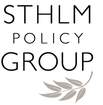Evaluation of a peace promotion project in the Philippines Nov 29
Sthlm Policy Group · Comments: 28The evaluation focused on identifying changes that occurred from the project and how they occurred, and why. The evaluation focused on identifying results at the outcome level by interviewing key stakeholders at the community barangay level in the Mindanao who explained what they experience is different today from a few years ago, and what they believed contributed to these changes. The main questions for the evaluation was if and how Conciliation Resources' (CR) activities contributed to the project’s objectives, and whether the results were relevant to the local context.
The overall conclusion was that the PEaCE for Good Governance project made a difference in terms of the projects three outcomes of (i) increased capacities for community organisations and civil society to engage with local authorities; (ii) local governance policies, programmes and processes are responsive to, and inclusive of, community needs; and (iii) learning from project implementation informs replication of similar initiatives in the Bangsamoro by local authorities. Through its various activities, CR has contributed to the fulfillment of the objective of enhanced local governance in Mindanao through increased and more efficient and sustained civil society engagement with Local Government Units; it has empowered women, youth and marginalized groups at the local level, strengthening their participation in local decision-making processes; it has contributed to a number of relevant development and peacebuilding initiatives; and wider interest by the Bangsamoro Autonomous Region of Muslim Mindanao (BARMM) and Moro Islamic Liberation Front (MILF) to replicate the framework of effective participatory governance through CSWGs and connecting community members with various levels in the local government (regional, municipal and barangay levels).

Comments: 28